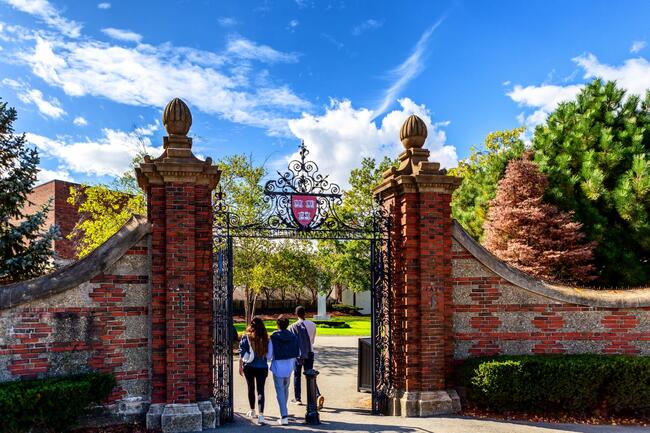You have /5 articles left.
Sign up for a free account or log in.

APCortizasJr/iStock Unreleased/Getty Images
Every week, on an inside page of The Vineyard Gazette, readers can find an indicator of progress toward an environmental goal all of us might share: preserving the natural beauty of a vulnerable small island with too many oversized homes and too much gross overlandscaping to sustain it. A house is sold, and 2 percent of the sale price is designated for the Martha’s Vineyard Land Bank, to be used, as the newspaper reminds readers, “to purchase and manage land for purposes of conservation, preservation, and passive recreation.” The weekly posting concludes, “To date the agency has participated in the purchase of more than 4,206 acres of Vineyard land.”
For the week ending Jan. 10, 15 transactions in five towns produced just over $500,000 for the land bank. Half of that ($243,380) was for six sales in Edgartown, suggesting an average sale price of about $2 million per property. Turning to the land bank’s website, you can pull down maps of just what those 4,000-plus purchased and preserved acres include, in maintained land the public is free to hike and—because often it provides access to water—swim and fish from, all over the island, in perpetuity.
Meanwhile, the largest donations to American universities go, with very few exceptions, to the wealthiest private institutions. If it isn’t Harvard or Stanford, it’s Penn, or perhaps Dartmouth or Northeastern. But what if legislation—or custom—provided that for every $1 million gift to a wealthy institution, 2 percent of it would be hived off for a historically Black college or university, a community college, or some public regional university—the kinds of institutions that educate many times more Americans than the Ivies do, but often have virtually no endowment and struggle for resources? What can America learn from the Martha’s Vineyard Land Bank?
It’s hard to think of objections. The wealthy institution—we’ll call it “Harvard”—gets, as the donor wished for his or her own purposes, 98 percent of a significant donation. Two percent, or $20,000 from a $1 million gift, goes to a cause that a donor will hardly disapprove of, and Harvard, even if it disapproves, has to hold its tongue.
I remember a remark I heard from a fundraiser when I worked in the (real) Harvard president’s office: In response to a suggestion that Harvard could fund a small local institution, the fundraiser replied, “Harvard is not a foundation.”
Well, it kind of is, or has become one. It invests in programs in its host cities, Cambridge and Boston; in the case of Boston, it is intimately involved in the redevelopment of an entire neighborhood, Allston. Through the Harvard Ed Portal, the university provides arts programming, mentoring, scholarships and more for the Allston and Brighton neighborhoods. And Harvard’s $100 million Legacy of Slavery Initiative, announced in 2022, has funded community organizations through a foundation-like grant program. Of course Harvard is a foundation.
Philanthropy is the lifeblood of U.S. higher education. Nothing will change that anytime soon. But Congress is now taxing the largest endowments, at a rate of 1.4 percent of net investment income, so the once-impregnable conception that your donation to the private institution of your choice is sacrosanct has been broached.
Americans are bothered by rising wealth and income inequality, which has been increasing for 40-plus years since the Reagan administration. The Martha’s Vineyard Land Bank, created in 1986, has become a force not only for environmental preservation (as it started out) but for economic fairness and social justice on an island of millionaires and struggling year-round (not to mention seasonal) workers who will never be able to buy a home on the island, or easily access more than small pockets of its meadows, forests or beaches. Only a tiny number of Americans can be educated in the Ivy League or similar rich institutions that admit only one in 10 or even 20 applicants. But by propping up the institutions the rest attend, redistribution will give them a better chance.
The current political climate is hostile toward higher ed. President Trump signed the first endowment tax into law in 2017; in 2023, Senator JD Vance, now his vice president, filed a bill to increase that tax to 35 percent. With daily outrages visited upon higher ed since Trump returned to office on Jan. 20, who knows how long universities will have to stay on defense against the onslaught? A redistribution program like this will cost universities less and, if they embrace it, buy them goodwill; for progressives, it’s a rare chance to achieve policy goals against strong political countercurrents.
The details are to be worked out, like any. What agency will be established to distribute the funds, what are its criteria and who provides oversight? Will the collected revenue go into a national pool, or perhaps a local or regional fund? What are the tax implications, for donors and recipients alike? And, if legislation won’t happen, what university president will go first and say, “We’ll do this,” and hope others follow? My guess, meaning nothing, is that it will be Wesleyan.








